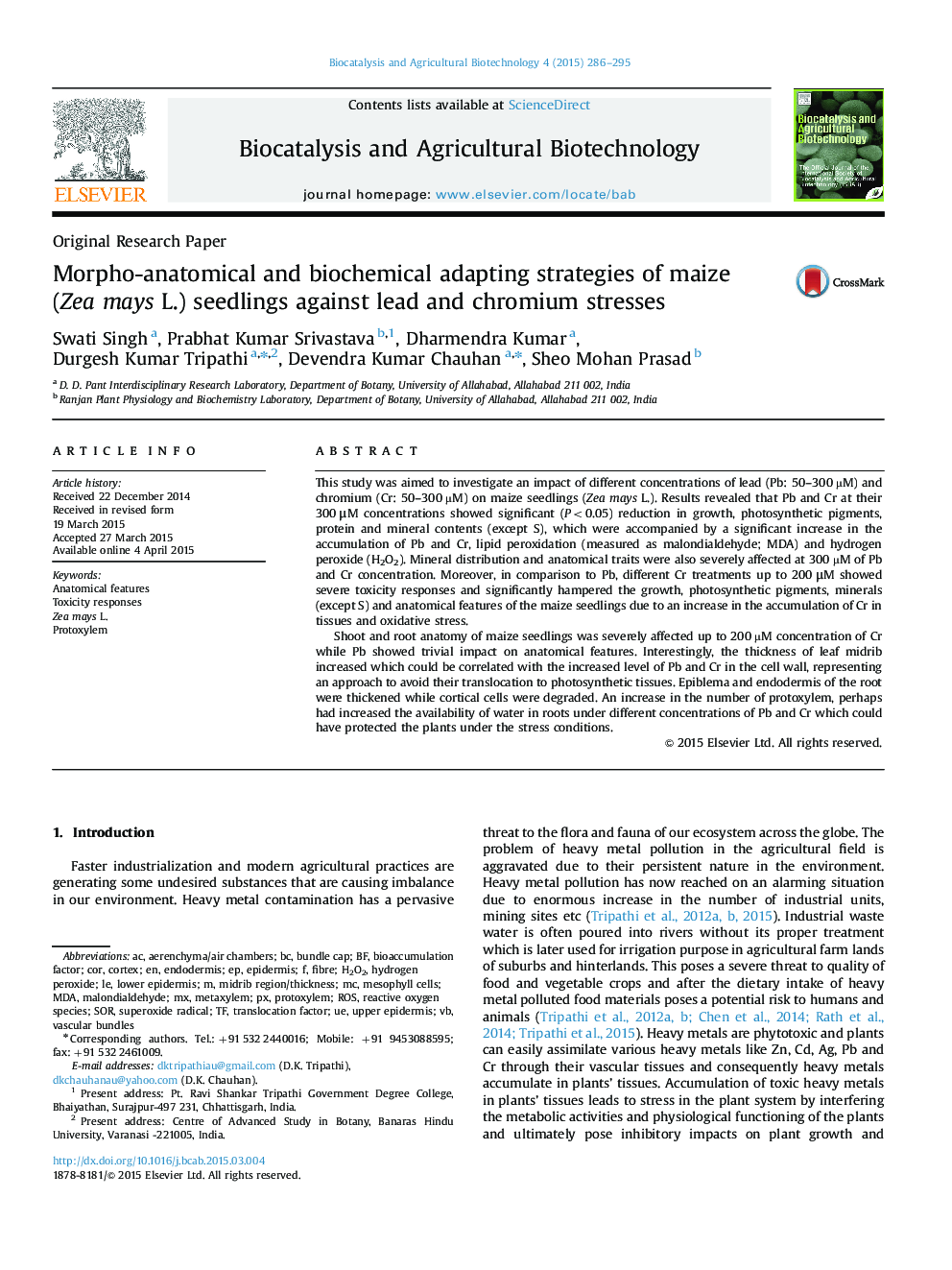| Article ID | Journal | Published Year | Pages | File Type |
|---|---|---|---|---|
| 2075452 | Biocatalysis and Agricultural Biotechnology | 2015 | 10 Pages |
This study was aimed to investigate an impact of different concentrations of lead (Pb: 50–300 µM) and chromium (Cr: 50–300 µM) on maize seedlings (Zea mays L.). Results revealed that Pb and Cr at their 300 μM concentrations showed significant (P<0.05) reduction in growth, photosynthetic pigments, protein and mineral contents (except S), which were accompanied by a significant increase in the accumulation of Pb and Cr, lipid peroxidation (measured as malondialdehyde; MDA) and hydrogen peroxide (H2O2). Mineral distribution and anatomical traits were also severely affected at 300 µM of Pb and Cr concentration. Moreover, in comparison to Pb, different Cr treatments up to 200 μM showed severe toxicity responses and significantly hampered the growth, photosynthetic pigments, minerals (except S) and anatomical features of the maize seedlings due to an increase in the accumulation of Cr in tissues and oxidative stress.Shoot and root anatomy of maize seedlings was severely affected up to 200 µM concentration of Cr while Pb showed trivial impact on anatomical features. Interestingly, the thickness of leaf midrib increased which could be correlated with the increased level of Pb and Cr in the cell wall, representing an approach to avoid their translocation to photosynthetic tissues. Epiblema and endodermis of the root were thickened while cortical cells were degraded. An increase in the number of protoxylem, perhaps had increased the availability of water in roots under different concentrations of Pb and Cr which could have protected the plants under the stress conditions.
